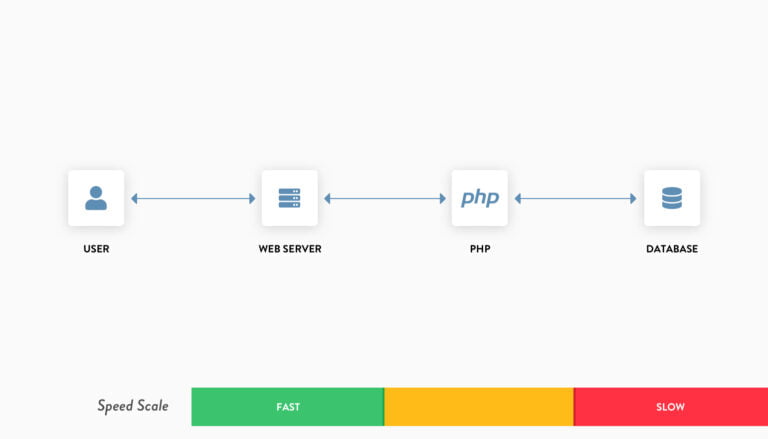In today’s digital era, the lines between work and life have become increasingly blurred.
A recent survey paints a concerning picture: 65% of individuals state that their remote work schedules have them clocking in more hours than they used to. Even more striking, two-thirds of full-time US workers can’t confidently say they’ve nailed the work-life balance.
But getting your life on an even keel is essential. In the frenetic pace of today’s world, where tasks and distractions compete for our attention, achieving a state of equilibrium between work and personal life isn’t just for inner peace. It’s vital for mental well-being, productivity, and maintaining healthy relationships. Without it, we risk burnout, strained relationships, and a loss of purpose. In essence, balance is the anchor that keeps us grounded amidst the storm.
How can you regain that elusive equilibrium? Books. And not just any – we’ve cherry-picked 15 titles, loaded with tales of success, firsthand experiences, transformative advice, and actionable tips from those who’ve walked the tightrope and found their balance. These aren’t mere pages; they’re power-packed tools to shift your thinking and reshape your daily grind. Ready to dive in? Here are the 15 work-life balance books set to recalibrate your compass.
In an era where remote work has become the new normal, many of us find ourselves entangled in an ever-tightening mesh of tasks and demands. A survey offers a telling glimpse: 65% of individuals state that their remote work schedules have them clocking in more hours than they used to. Even more striking, two-thirds of full-time US workers can’t confidently say they’ve nailed the work-life balance.
In a time where every beep and notification competes for our gaze, finding that equilibrium between professional obligations and personal time isn’t just about tranquility. It’s about mental health, being productive, and nurturing those bonds we hold dear. Lose this balance, and we drift, risking burnout and disconnection.
Now, how does one reel back this equilibrium? Well, I’ve handpicked 15 books to help guide you.
Why books? Because they’re treasure troves. Each page brims with the wisdom of those who’ve been there and done that, offering tales of triumphs, failures, and insights. Such narratives don’t just present tips; they reshape how you view the world and operate within it.
So, eager to discover a blueprint to balance? Here are the 15 titles I recommend.
15 Inspiring Work-Life Balance Books
Table of Contents
- 1 15 Inspiring Work-Life Balance Books
- 1.1 1. “The 4-Hour Workweek” by Timothy Ferriss
- 1.2 2. “Essentialism: The Disciplined Pursuit of Less” by Greg McKeown
- 1.3 3. “Boundaries: When to Say Yes, How to Say No to Take Control of Your Life” by Henry Cloud and John Townsend
- 1.4 4. “The Full Life Framework: The Essential Guide” by Leon Ho
- 1.5 5. “The Miracle Morning: The Not-So-Obvious Secret Guaranteed to Transform Your Life (Before 8AM)” by Hal Elrod
- 1.6 6. “Rest: Why You Get More Done When You Work Less” by Alex Soojung-Kim Pang
- 1.7 7. “Overwhelmed: Work, Love, and Play When No One Has the Time” by Brigid Schulte
- 1.8 8. “Never Split the Difference: Negotiating As If Your Life Depended On It” by Chris Voss
- 1.9 9. “Off Balance: Getting Beyond the Work-Life Balance Myth to Personal and Professional Satisfaction” by Matthew Kelly
- 1.10 10. “Work Simply: Embracing the Power of Your Personal Productivity Style” by Carson Tate
- 1.11 11. “It Doesn’t Have to Be Crazy at Work” by Jason Fried and David Heinemeier Hansson
- 1.12 12. “The Happiness Project: Or, Why I Spent a Year Trying to Sing in the Morning, Clean My Closets, Fight Right, Read Aristotle, and Generally Have More Fun” by Gretchen Rubin
- 1.13 13. “How to Have a Good Day: Harness the Power of Behavioral Science to Transform Your Working Life” by Caroline Webb
- 1.14 14. “The Art of Possibility: Transforming Professional and Personal Life” by Rosamund Stone Zander and Benjamin Zander
- 1.15 15. “The Top Five Regrets of the Dying” by Bronnie Ware
- 2 Final Thoughts
Let’s dive straight into these titles. Each has a nugget (or several) of wisdom to offer:
1. “The 4-Hour Workweek” by Timothy Ferriss
Ferriss revolutionizes the traditional 9-to-5. He introduces methods to streamline work, emphasizing that a shorter workweek leads to a balanced life where passions outside of work can thrive.
He details strategies like the 80/20 rule, where 80% of outputs come from 20% of efforts, advocating for focused work. He also promotes the idea of ‘selective ignorance’—ignoring or avoiding unnecessary information or tasks to maintain a clear mind and a balanced life.
By trimming your work commitments down to their essence, you’re not just buying time, but redefining what ‘busy’ truly entails.

2. “Essentialism: The Disciplined Pursuit of Less” by Greg McKeown
McKeown drills down on the idea that doing everything is counterproductive.
He provides a detailed process to discern what’s absolutely essential at work and how to eliminate the rest. He advocates for quality over quantity, ensuring there’s time left for personal rejuvenation, achieving a balanced life.

3. “Boundaries: When to Say Yes, How to Say No to Take Control of Your Life” by Henry Cloud and John Townsend
Boundaries are vital for maintaining sanity in work and personal spaces. By saying ‘no’ when needed at work, you ensure personal time remains undisturbed and fulfilling.
This book provides strategies for setting and maintaining clear boundaries at work, preventing tasks or responsibilities that aren’t yours from eating into your personal time.

4. “The Full Life Framework: The Essential Guide” by Leon Ho
I wrote this book after realizing that ignoring any area of life might cause the other aspects to suffer. I used to be a workaholic, and disregarding my health and spending time with my family caused me to struggle.
After a lot of research and experimenting with numerous approaches to change my life, I developed The Full Life Framework to balance the 6 essential areas of life with life skills that can harness our strengths and thrive in different aspects of life.

5. “The Miracle Morning: The Not-So-Obvious Secret Guaranteed to Transform Your Life (Before 8AM)” by Hal Elrod
Elrod underscores the power of mornings. He breaks down the six practices of Life S.A.V.E.R.S. (Silence, Affirmations, Visualization, Exercise, Reading, and Scribing) to structure your mornings, ensuring you have personal growth time before work begins.
By dedicating early hours to personal growth, we can set the tone for a day where work demands don’t entirely consume personal time.

6. “Rest: Why You Get More Done When You Work Less” by Alex Soojung-Kim Pang
Here’s a refreshing paradox: rest more, achieve more. Pang beckons us to reconsider our reverence for the non-stop hustle.
He introduces the concept of ‘deliberate rest’ and how high performers integrate rest into their routines, arguing that scheduled breaks during work can lead to higher productivity and personal time.

7. “Overwhelmed: Work, Love, and Play When No One Has the Time” by Brigid Schulte
Schulte uncovers why people feel ‘time confetti,’ moments of free time sprinkled throughout a busy day. She offers solutions on how to cluster these moments for meaningful personal experiences amidst work.
By reconfiguring our relationship with time, we can achieve a work-life rhythm that feels less frantic.

8. “Never Split the Difference: Negotiating As If Your Life Depended On It” by Chris Voss
Voss, a former FBI negotiator, sheds light on negotiation in daily scenarios. He provides negotiation tactics like ‘mirroring’ and ‘labeling’ that can be used to manage workplace expectations, ensuring you’re not overburdened and still have personal time.

9. “Off Balance: Getting Beyond the Work-Life Balance Myth to Personal and Professional Satisfaction” by Matthew Kelly
Kelly dismantles the traditional work-life balance concept. Instead, he promotes seeking satisfaction in both domains, leading to a naturally balanced life.
He provides a system to score personal and professional satisfaction levels, allowing us to see where we need rebalancing, ensuring neither work nor life feels shortchanged.

10. “Work Simply: Embracing the Power of Your Personal Productivity Style” by Carson Tate
Tate suggests that understanding our unique work style can lead to faster task completion, leaving more room for personal time and ensuring balance. He categorizes people into four productivity styles, detailing how each can optimize work.
Recognizing and working within our style can cut down on work hours, freeing up personal time.

11. “It Doesn’t Have to Be Crazy at Work” by Jason Fried and David Heinemeier Hansson
Fried and Hansson make a case against chaotic workplaces as a calm work environment leads to focused tasks, ensuring that work ends on time and personal life isn’t compromised.
They highlight practices they’ve implemented at their company, Basecamp, like the ‘No Talk Thursdays’ ensuring focused work, leading to more personal downtime.

12. “The Happiness Project: Or, Why I Spent a Year Trying to Sing in the Morning, Clean My Closets, Fight Right, Read Aristotle, and Generally Have More Fun” by Gretchen Rubin
Rubin’s experiments in seeking joy emphasize that infusing daily personal routines with happiness can lead to a fulfilling life outside work, balancing the scales.
Her monthly resolutions, like ‘Tackle a nagging task’ or ‘Take time for projects,’ show how organizing personal life leads to clearer boundaries between work and home.
13. “How to Have a Good Day: Harness the Power of Behavioral Science to Transform Your Working Life” by Caroline Webb
Webb applies behavioral science to daily routines, offering strategies like starting the day with the most crucial task to ensure work doesn’t seep into personal time.
By making workdays smoother, we can easily transition to relaxed personal time.

14. “The Art of Possibility: Transforming Professional and Personal Life” by Rosamund Stone Zander and Benjamin Zander
The Zanders invite us to reimagine work and personal challenges as opportunities. For example, they use practices like ‘Giving an A’ to change workplace dynamics, creating an environment where work feels fulfilling and less encroaching on personal space.
This perspective shift can lead to a harmonious integration of professional and personal spheres.

15. “The Top Five Regrets of the Dying” by Bronnie Ware
Ware’s insights remind us of life’s impermanence.
Through the regrets of the dying, she emphasizes prioritizing relationships and personal happiness over extended work hours or seeking constant professional validation.
Final Thoughts
In the ever-spinning carousel of our lives, making time for both our professional ambitions and personal passions is the key to not only surviving but thriving. We’re living in a world that’s moving faster than ever, and the balance keeps us grounded, making sure we don’t lose sight of what truly matters.
The books listed above are more than just words on a page. They’re roadmaps, guiding lights in the sometimes foggy journey of maintaining equilibrium in our lives. Delve into them. Find the insights and strategies that resonate with you. Let the experiences of others provide you the tools and perspectives to craft a more balanced chapter in your own life story.









